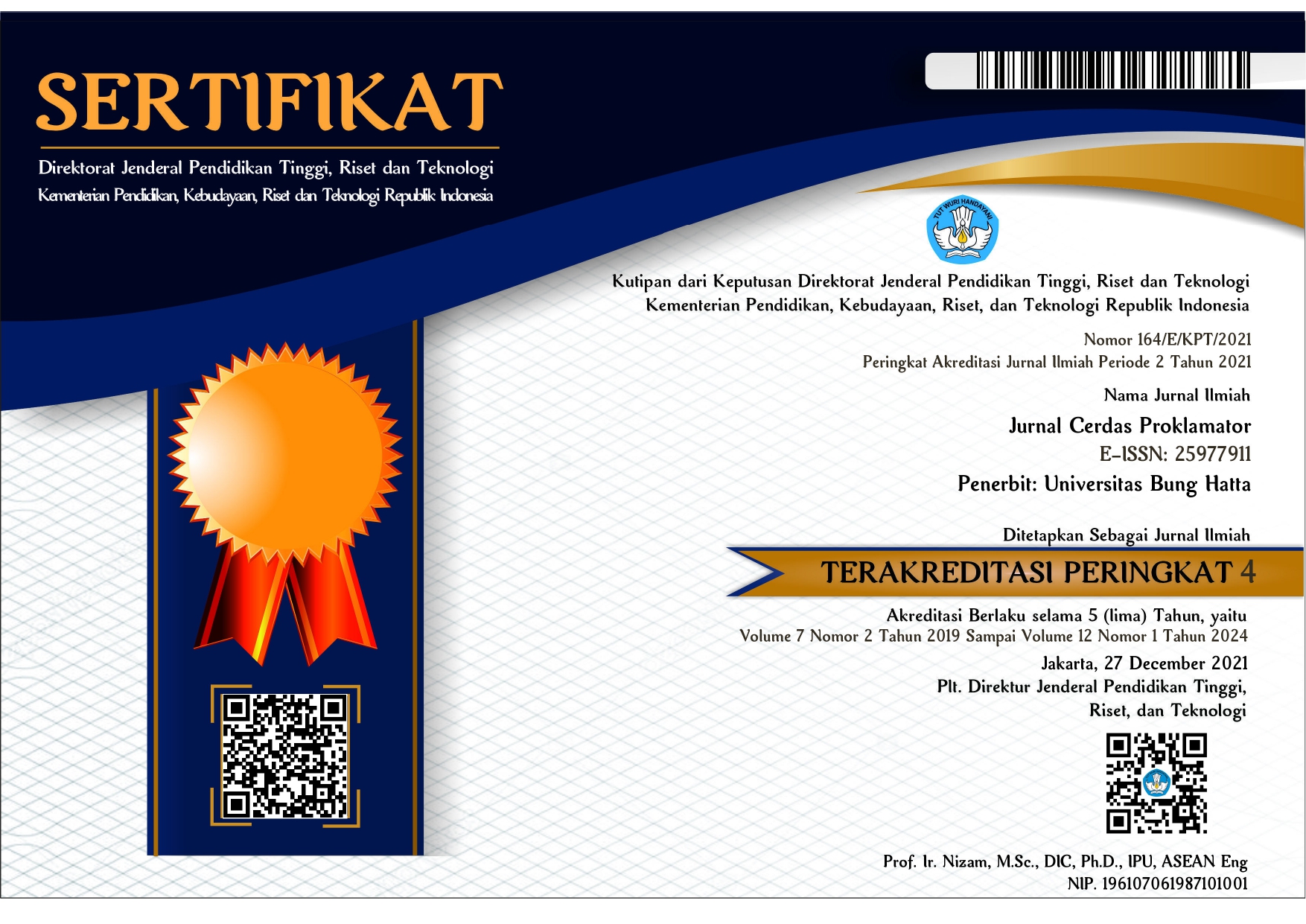PENGEMBANGAN MATERI PEMBELAJARAN COLLABORATIV LEARNING BERBASIS KEARIFAN LOKAL UNTUK MENGEMBANGKAN KARAKTER KREATIF DAN BERSAHABAT DI SD ISLAM KHAIRA UMMAH PADANG
DOI:
https://doi.org/10.37301/cerdas.v8i1.56Kata Kunci:
collaborative learning materials, local wisdom, character, students of SD Islam Khaira UmmahAbstrak
The article contains a discussion of the form of collaborative learning material based on local wisdom that can be used to develop creative and friendly character for students of SD Islam Khaira Ummah Padang. Respondents were fourth grade students of SD Islam Khaira Ummah Padang. Learning materials that can be used in an effort to develop a creative and friendly character, one of which is through a collaborative learning model based on local wisdom, in this case is Minangkabau local wisdom. The findings show that learning with a collaborative learning model based on local wisdom can make students have a creative and friendly character. It is indicated that students are able to create something new, not limited to things in the textbook. Meanwhile, the friendly character is also shown by students in collaborating with peers, causing an attitude of togetherness that does not win alone, so that no student feels isolated in the class
Referensi
Apriani, A. & Wangid, M. (2015). “Pengaruh SSP Tematik-Integratif terhadap Karakter Disiplin dan Tanggung Jawab Siswa Kelas III SD”. Jurnal Prima Edukasia, Vol. 3, No. 1, hlm. 12-25.
Balitbang. (2010a). Bahan Pelatihan Pengembangan Budaya dan Karakter Bangsa. Jakarta: Kemdiknas.
Balitbang. (2010b). Kerangka Acuan Pendidikan Karakter. Jakarta: Kemdiknas.
Borg, W. R. & Gall, M. D. (1983). Educational Research an Introduction, New York: Pearson Education, Inc.
Borich, G.D. (2007). Effective Teaching Methods Research-Based Practice Upper Saddle River: Pearson Merrill Prentice Hall.
Brophy, Alleman, & Knighton. (2010). A Learning Community in the Primary Classroom. Francis: Publication Data.
John, D. Peter. (2006). “Lesson Planning and the Student Teacher: Re-Thinking the Dominant Model”. Journal of Curriculum Sudies. Vol. 38, No. 4, pp. 483-498.
Jones, R. & Wyse, D. (2013). Creativity in the Primary Curriculum. New York: Routledge.
Kail, R.V & Cavanaugh, J.C. (2013). Human Development a Life-Sapan View Canada: Wadsworth Ceangge Learning.
Lickona, T. (1991). Educating for Character How Our School Can Teach Respect and Responsibility. New York: Bantam Books.
Milles & Huberman. (2014). Qualitative Data Analysis. California: Sage Publications.
Mustadi, Ali. (2014). “Lesson Study Berbasis Collaborative Learning sebagai Model Pemantapan Kualitas Pendidikan di Sekolah Dasar”. Proceeding, 12 Maret 2014. Diakses pada tanggal 26 Maret 2016, dari http://pps. uny.ac.id/-pps.uny.ac.id/files/ProsidingSEMN SDIKDAS.pdf.
Nunan, D. (2002). Syllabus Design. New York: Oxford University.
Sato, M. (2012). Mereformasi Sekolah: Konsep dan Praktik Komunitas Belajar. (Terjemahan Fatmawati Djafri). Tokyo: Pelita JICA.
Setyawan, W. & Mustadi, A. (2015). “Pengembangan SSP Tematik-Integratif untuk Membangun Karakter Disiplin dan Kreatif Siswa Kelas I SD”. Jurnal Prima Edukasia, Vol. 3, No. 1, hlm. 108-119.
Shen, Jianping, et al. (2007). “Lesson Planing: A Practice of Professional Responsibility and Development”. Educational Horison, No. 4, pp. 193-260. Tan, Al-Girl. 2007. Creativity a Handbook for Teachers. Singapura: World Scientific Publishing.
Vygotsky, L.S. (1978). Mind in Society: The Development of Higher Psychological Processes. Harvard: Harvard University Press.
##submission.downloads##
Diterbitkan
Terbitan
Bagian
Lisensi
Copy right in each article belong to the authors.
1. The author acknowledges that the Journal Cerdas Proklamator as a publisher who publishes for the first time with the
Creative Commons Attribution 4.0 International License.
2. The Author can enter the writing separately, manage the non exclusive distribution of manuscripts that have been published in this journal into the other versions (eg sent to the repository of the author's institution, publication in book, etc), by acknowledge that the manuscript was first published in the Jurnal Cerdas Proklamator.






















